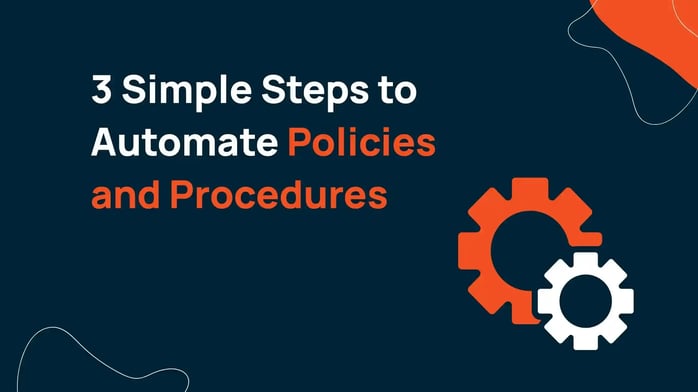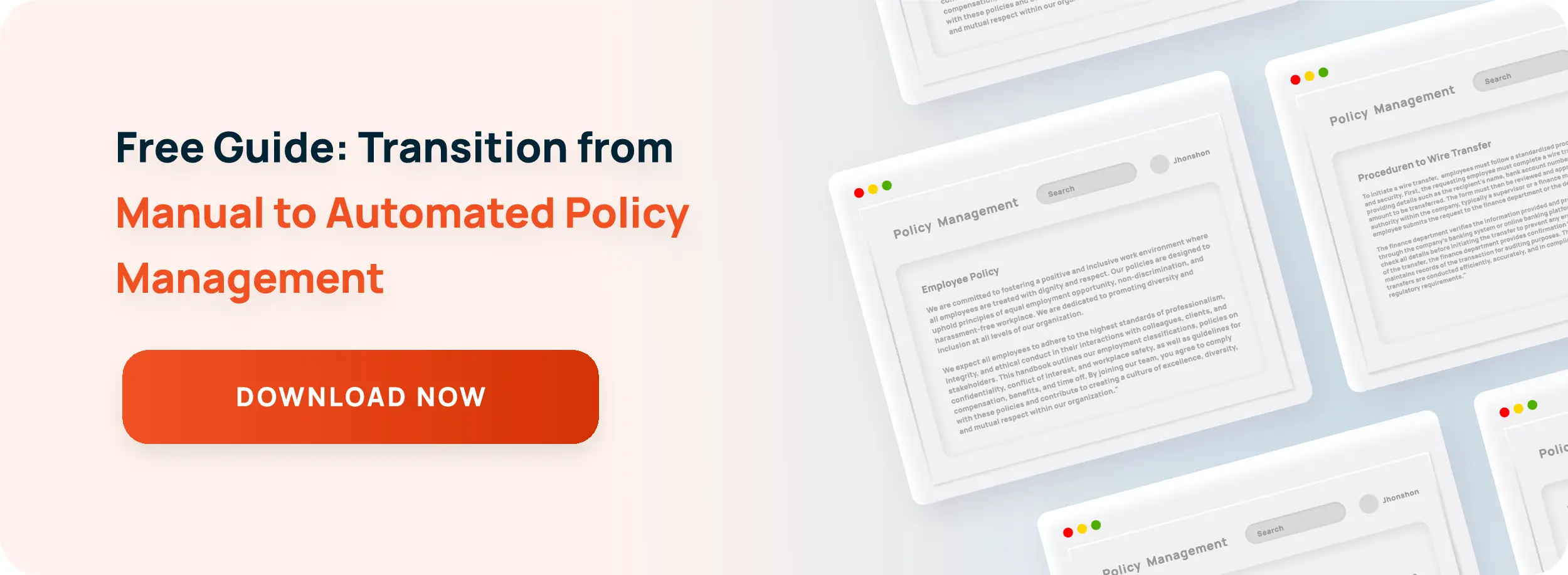3 Simple Steps to Automate Policies and Procedures

3 Simple Steps to Better Policies and Procedures Management Software
Without policies and procedures management, no company can survive.Policy and Procedure Management is the strong foundation established for a stable and successful future; therefore it is essential to have an effective policies and procedures management process. The entire lifecycle of the policies and procedures management can be summarized in three steps:
Step 1: Plan, Draft, and Create
It is necessary that all policies and procedures are planned properly in accordance to company and regulatory standards. This idealizes long term goals and ensures the future stabilization of your company. From a compliance viewpoint, this phase is where the procedures are carefully outlined and through employee collaboration. The future and outcome of your compliance efforts are determined by the way policies are created and organized in this primary stage. Once the drafts of the policies and procedures have been created, they are distributed to the right administrators for approval and review. Take advantage of unique policy features your organization may not be utilizing now, such as policy templates that ensure all policies have a consistent look and feel.
Read More: Creating A Policy or Procedure Is Just The First Step
Step 2: Distribute Policies
After careful planning, draft, and review for approval, the policies of the new company are finally ready to be introduced to people who hold the greatest influence on the future organizational outcomes – your active employee base. Compliance and organizational efficiency build the future of most of the organizations existing today and therefore, must be appropriately distributed in order to ensure application and adherence. By introduction of new company policies to the employee base, you also reinforce that compliance plays a serious role in functioning of your organization on a daily basis. If you are creating large volume of policy documents, consider creating centralized policy document storage with version history. It will be easy for the referencing of the old policies during internal and external audits. For more information read policy management software for archiving policy information.
Read More: 3 Ways Policy Management Software Can Improve Policy Distribution
Step 3: Employee Acknowledgement
Once you are done with the first two steps, you’ve reached the last phase of the policy lifecycle — the one that closes the circle of the policy management lifecycle. This last policy acknowledgement phase possesses a lot of power as it ensures that your employees have read your carefully drafted policies and procedures. When introduced properly to the policies and procedures, respective employees have the ability to differentiate its economic gain and understand how the policy fits into the company equation. Employees that embrace a practical approach to implementing and learning policies and procedures can result in an overall increase in organizational performance. Knowing the suitable actions to take in any situation can lead to superior customer service and ensure greater corporate cohesion.
Read More: Policy Lifecycle Management Software- Attestation and Acknowledgement

